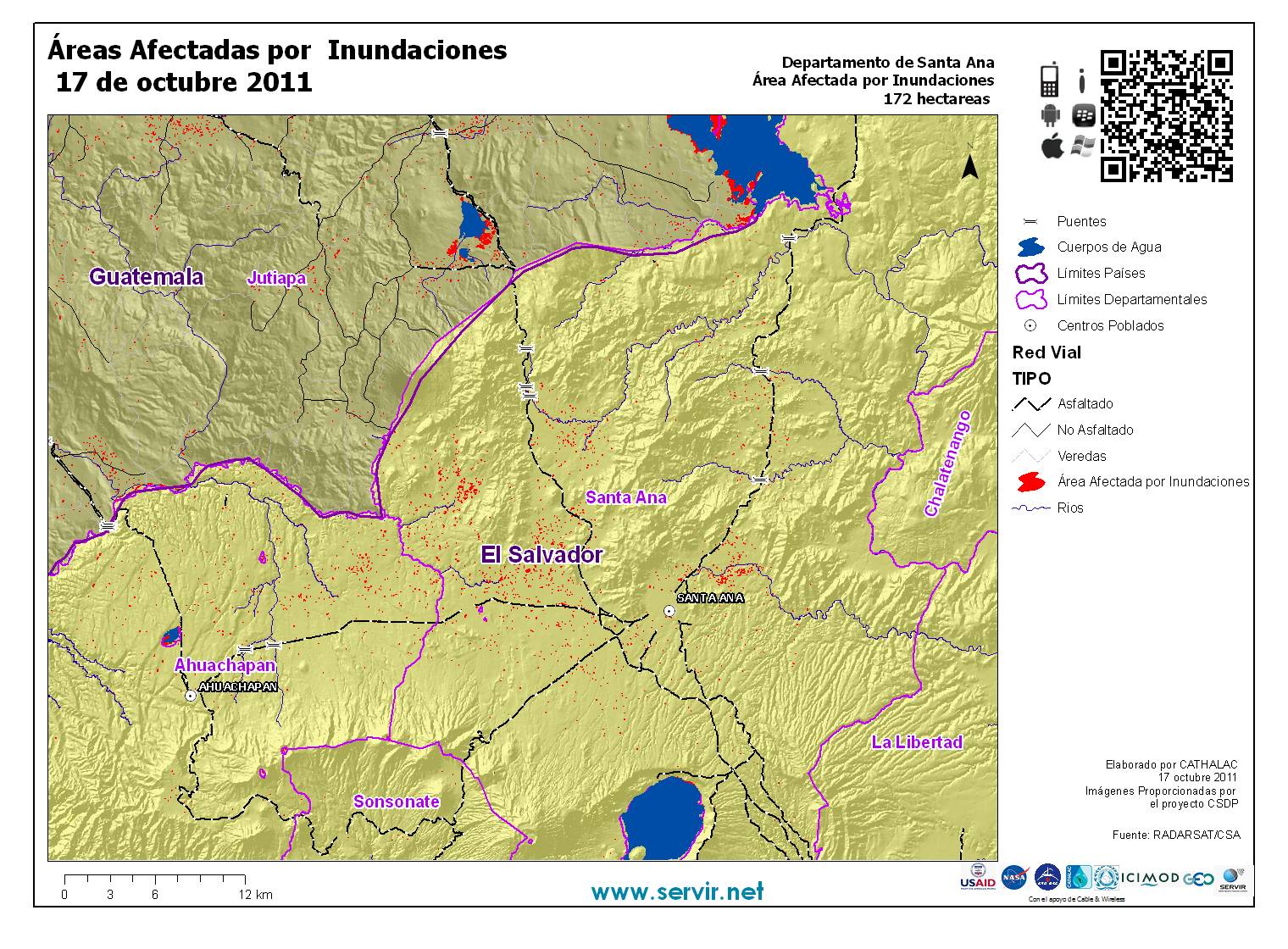Type of resources
Available actions
Topics
Keywords
Contact for the resource
Provided by
Years
Formats
Representation types
Update frequencies
status
Scale
Resolution
-

Areas affected by flooding in the Department of Jalapa. Captured on 17 October 2011 by RADARSAT-2. Data provided by Canadian Space Agency.
-
Lake Atitlans surface extent data in GIS format for the different dates evaluated
-
Lake Atitlans surface extent data in GIS format for the different dates evaluated
-

Areas affected by flooding in the Department of Alta Verapaz. Captured on 17 October 2011 by RADARSAT-2. Data provided by Canadian Space Agency.
-

This Formosat-2 satellite image shows flooded areas in the Comitancillo village, located in the department of San Marcos. Formosat image © 2010 Dr. Cheng-Chien Liu, National Cheng Kung University; Dr. An-Ming Wu, National Space Organization, Taiwan; Global Earth Observation and Data Analysis Center (GEODAC), Taiwan.
-
Landsat 7 Enhanced Thematic Mapper (ETM+) surface extent data for Lake Atitlan in GIS format for November 1, 2004 (ZIP of .shp files). Area in hectares = 12324.074
-
Landsat 5 Thematic Mapper (TM) surface extent data for Lake Atitlan in GIS format for December 27, 1998 (ZIP of .shp files). Area in hectares = 12289.69
-

This before-and-after map shows an agricultural area in La Paz near the Nahualapa Lagoon. The historical image of 29 March 2010, was provided through Google Earth, and the recent Quickbird-2 image on 28 October 2011, was obtained through SERVIR from Digital Globe.
-

Areas affected by flooding in the Department of Santa Ana. Captured on 17 October 2011 by RADARSAT-2. Data provided by Canadian Space Agency.
-

More floods were identified along Rio Grande (Motagua), this time in the border between the departments of Guatemala and Baja Verapaz. This analysis was made using orthophotos and Formosat-2 satellite images. Formosat image © 2010 Dr. Cheng-Chien Liu, National Cheng Kung University; Dr. An-Ming Wu, National Space Organization, Taiwan; Global Earth Observation and Data Analysis Center (GEODAC), Taiwan.
 Global Data Catalogue
Global Data Catalogue